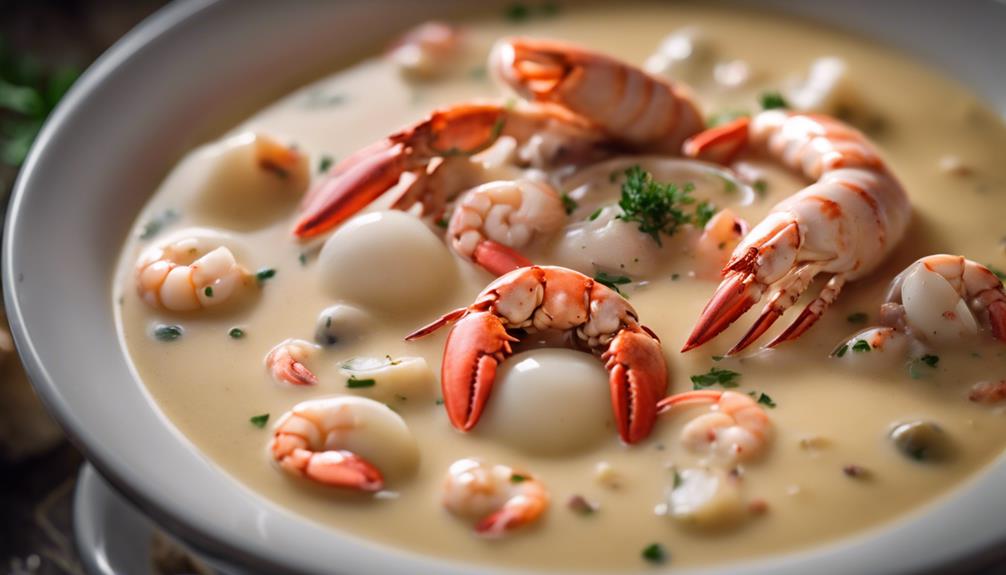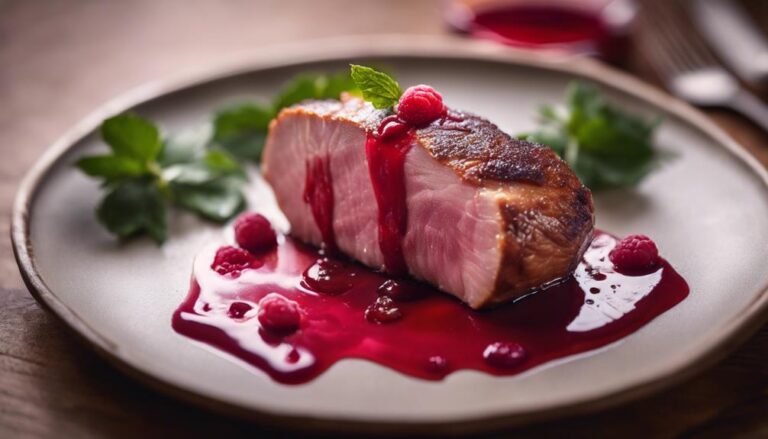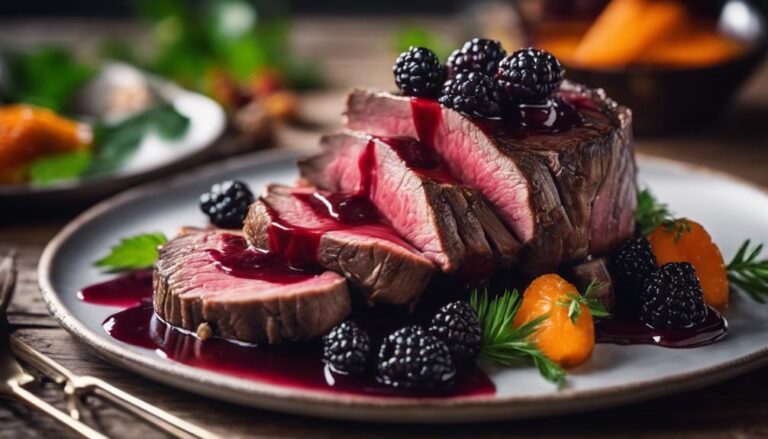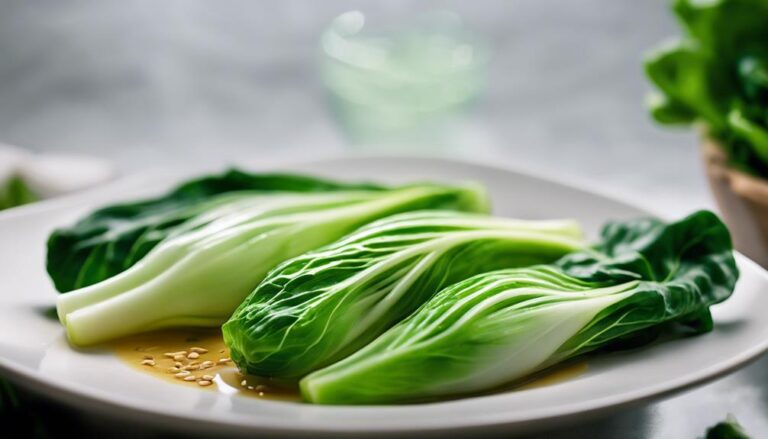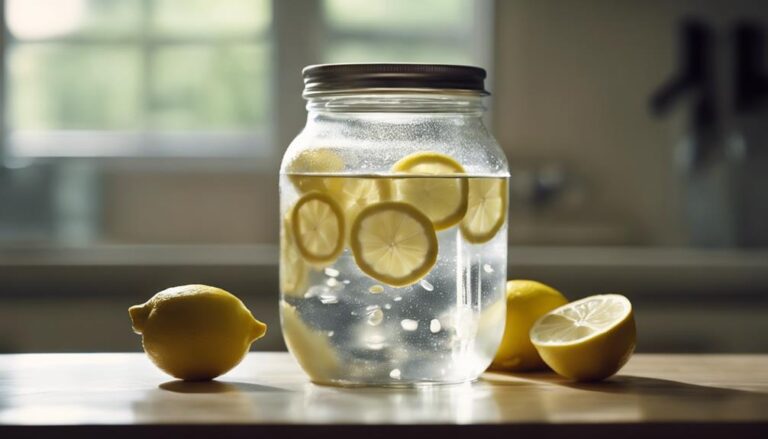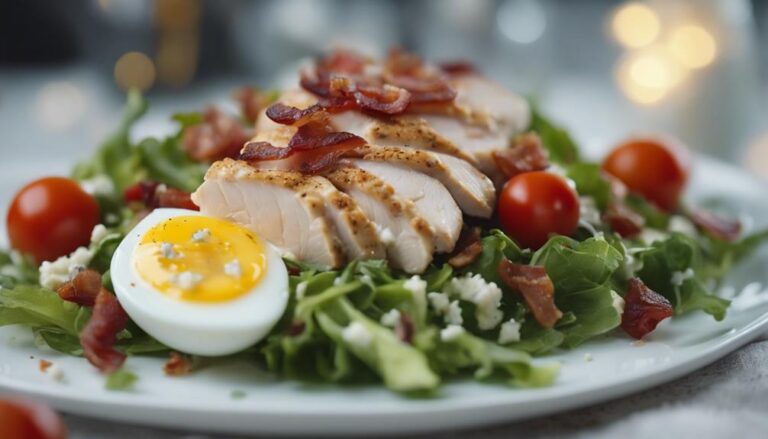Sous Vide Seafood Chowder
Sous vide seafood chowder revolutionizes the classic dish, infusing every bite with unmatched tenderness and flavor. Imagine seafood pampered in a spa day of deliciousness, bursting with a flavor explosion that simmers to perfection. With controlled temperatures and extended cooking times, this culinary magic guarantees your taste buds get the royal treatment. Elevate this creamy delight with fresh herbs for an extra pop of flavor. So, get ready to set off on a seafood chowder journey that will have you savoring each spoonful. Get ready for an experience that will have your taste buds dancing with joy.
What You Will Learn Here
- Sous vide technique enhances seafood flavors in chowder.
- Controlled temperature and extended cooking time ensure tender, flavorful results.
- Vacuum sealing preserves freshness, improves flavor, and texture.
- Fresh herbs elevate depth and add brightness to the dish.
- Slow cooking process develops rich flavors beautifully over time.
Chowder's Evolution Over Time
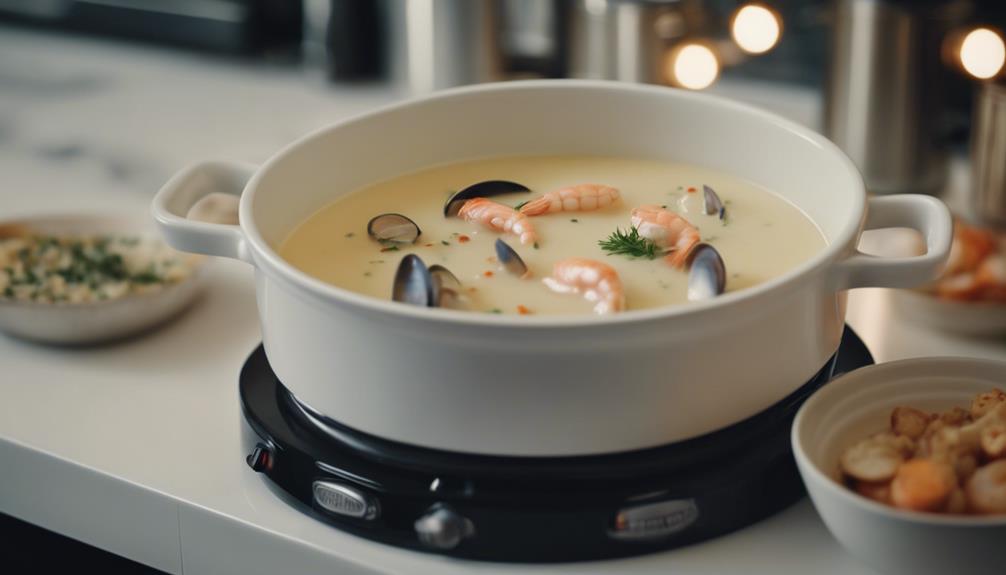
So, you're probably wondering how chowder went from a simple fisherman's dish to a gourmet sensation, right?
Well, let's take a tasty trip through history, exploring how old-school chowder recipes have evolved into modern culinary masterpieces.
From traditional ingredients to contemporary twists, chowder has come a long way, adapting to different tastes and regional preferences.
Historical Chowder Recipes
Through the centuries, chowder has transformed and adapted, reflecting the changing tastes and ingredients available in different regions. Chowder origins date back to the 16th century when French and British fishermen created hearty stews onboard their vessels.
Seafood history shows that chowder was initially a humble dish, made with fish, salt pork, onions, and hardtack biscuits. As chowder spread to America, each region added its twist, from clam chowder in New England to Manhattan clam chowder's tomato-based broth. These variations continue to evolve, with modern chefs putting unique spins on this classic comfort food.
Modern Ingredient Variations
As chowder has evolved over time, modern chefs have introduced innovative ingredient variations that have transformed this classic dish into a culinary delight with a contemporary twist. Sous vide exploration has taken seafood chowder to new heights, ensuring every bite bursts with flavor. Imagine perfectly cooked seafood, infused with rich, creamy goodness, thanks to this modern cooking technique.
Ingredient experimentation is another key player in the chowder revolution. Chefs are fearlessly mixing traditional elements with unexpected twists, like adding exotic spices or swapping out classic seafood choices for more daring options. The result? A seafood chowder that surprises and delights your taste buds in ways you never thought possible.
Regional Chowder Preferences
During its evolution over time, regional preferences have played a significant role in shaping the diverse variations of chowder. Seafood preferences and regional influences have led to chowder's unique identity across different areas. From the creamy New England clam chowder to the tomato-based Manhattan version, each region showcases its distinctive twist on this beloved dish.
Chowder history isn't just about what tastes good but also reflects cultural significance. It's like a flavorful journey through time, where each spoonful tells a story of traditions and flavors passed down through generations. So, next time you're savoring a warm bowl of chowder, remember you're not just tasting seafood; you're tasting a piece of culinary history with a sprinkle of regional pride.
Key Chowder Components
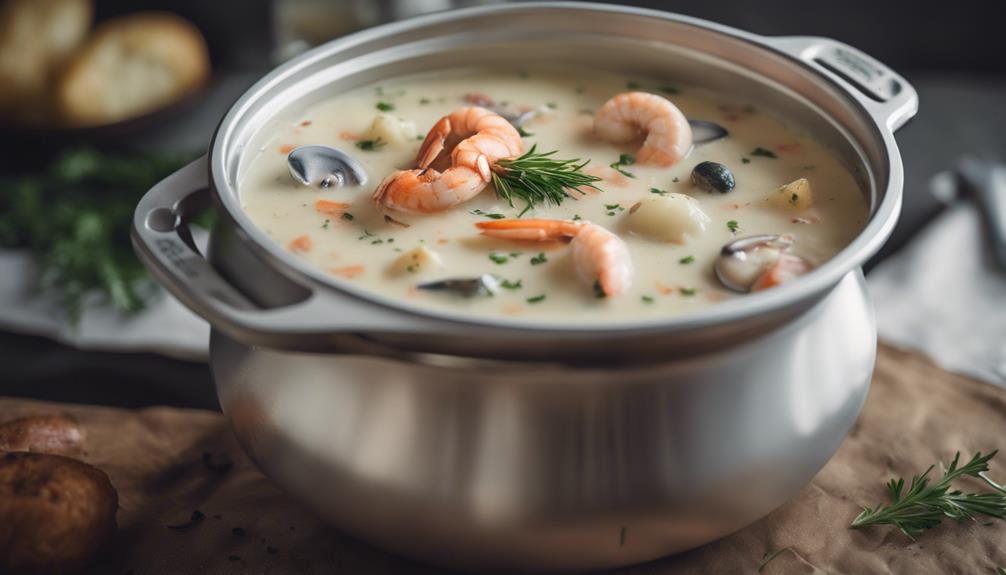
To create a flavorful seafood chowder, focus on incorporating key components that enhance the overall taste and texture of the dish. Here are four essential elements to take your chowder game to the next level:
- Fresh Seafood: Evolution in seafood sourcing has led to fresher ingredients, elevating the chowder's taste. Skip the canned stuff and opt for fresh catches to innovate your dish.
- Creamy Base: Traditional techniques call for a rich, creamy base. Whether you go for heavy cream or a lighter option, the creaminess is key to a comforting chowder experience.
- Flavorful Broth: Innovation in broth flavors can add depth to your chowder. Experiment with different herbs, spices, and stocks to create a unique taste profile.
- Hearty Vegetables: Traditional chowders include potatoes, corn, and other veggies for texture. Chop them up chunky or small, depending on your preference, and let them simmer to perfection.
Chowder Variations
Ready to spice up your chowder game? Think beyond the classic clam chowder with options like Sous Vide Crab Chowder, Creamy Lobster Bisque, and a flavorful Sous Vide Cioppino Recipe.
These variations will take your taste buds on a delicious adventure through the world of chowders – get ready to impress your friends and family with these mouthwatering twists!
Sous Vide Crab Chowder
For a delightful twist on traditional seafood chowder, consider exploring the delectable flavors of Sous Vide Crab Chowder. Here are some reasons why this dish will make your taste buds do a happy dance:
- Sous Vide Lobster, Corn: The sweet flavor of lobster and the pop of fresh corn kernels add a gourmet touch to this creamy chowder.
- Seafood Medley, Potatoes: A mix of succulent seafood and hearty potatoes creates a rich and satisfying base for the chowder.
- Crab Perfection: The tender crab meat, gently cooked in a sous vide bath, retains its delicate texture and infuses every spoonful with mouthwatering goodness.
- Balanced Flavors: The harmonious blend of crab, vegetables, and savory broth will have you savoring every last drop of this comforting dish.
Creamy Lobster Bisque
Indulge in the velvety richness of creamy lobster bisque, a luxurious twist on classic chowder variations that will elevate your culinary experience. When you immerse yourself in a bowl of lobster bisque, you're not just having soup; you're savoring a savory delight that sings with the flavors of the sea. Here's why creamy lobster bisque is the epitome of indulgent comfort:
- Decadent Creaminess: The silky-smooth texture of this bisque will make you want to wade in it.
- Rich Seafood Flavor: Each spoonful bursts with the essence of fresh lobster, creating a symphony of taste.
- Luxurious Ingredients: Lobster bisque doesn't hold back on the good stuff, giving you a taste of the finer things.
- A Culinary Hug: It's like a warm, delicious hug for your taste buds.
Sous Vide Cioppino Recipe
Immerse yourself in the flavors of the sea once again with a Sous Vide Cioppino Recipe that guarantees a delectable twist on traditional chowder variations.
- Seafood Pairing: This recipe brings together a delightful mix of seafood like shrimp, clams, mussels, and fish, creating a harmonious blend of flavors straight from the ocean.
- Flavor Infusion: By cooking the seafood sous vide, you guarantee that every bite is packed with intense and rich flavors, as the ingredients marinate in their own juices.
- Spice It Up: Don't forget to add a kick of spice with some red pepper flakes or a dash of hot sauce to elevate the flavors and give your taste buds a tantalizing experience.
- Crusty Bread: Serve your Sous Vide Cioppino with some crusty bread for dipping, because let's be honest, any excuse to eat carbs is a good one!
Sous Vide Techniques
So, let's talk about sous vide techniques.
First off, you've got precise temperature control – no more overcooking disasters!
Then there's the nifty vacuum sealing that keeps all the flavors locked in.
And let's not forget the slow cooking process that works its magic while you kick back and relax.
Precise Temperature Control
For precise temperature control in sous vide cooking, make sure your water bath is set to the exact degree specified in the recipe. Temperature accuracy is crucial to maintaining flavor consistency in your dishes.
By keeping your water at the precise temperature required, you guarantee that your seafood chowder turns out just right every time. Cooking precision isn't just about following a recipe; it's about mastering the art of texture control.
With sous vide, you have the power to achieve that perfect balance between tenderness and juiciness in your seafood. So, next time you're sous viding your chowder, remember, a degree off can make all the difference between a culinary masterpiece and a near miss!
Vacuum Sealing Benefits
To enhance the flavor and texture of your seafood chowder, vacuum sealing plays an essential role in sous vide cooking techniques. Vacuum sealing benefits include locking in the freshness of the seafood, ensuring that all the delicious flavors are preserved during the cooking process. By removing air from the bag before sealing, you prevent any potential oxidation that can affect the taste and quality of your ingredients. This method creates a perfect environment for your chowder ingredients to marinate and infuse with each other, resulting in a mouthwatering dish. Check out the table below to see a comparison of the benefits of vacuum sealing for sous vide cooking:
| Benefits of Vacuum Sealing |
|---|
| Locks in Freshness |
| Prevents Oxidation |
| Improves Flavor |
| Enhances Texture |
Slow Cooking Process
When slow cooking seafood chowder using sous vide techniques, the controlled temperature and extended cooking time result in tender, flavorful dishes that are unmatched in taste and texture.
The slow cooking benefits are truly remarkable – it's like giving your seafood a spa day to enhance its flavors! Sous vide seafood not only preserves the tenderness of the ingredients but also allows the flavors to develop beautifully over time.
It's like a culinary magic trick happening right in your kitchen. So, by taking it slow and letting the sous vide work its wonders, you're ensuring that every spoonful of your seafood chowder is bursting with deliciousness.
It's like a flavor explosion that's been simmering to perfection!
Final Thoughts
Considering the overall flavor profile and texture, incorporating a touch of fresh herbs can elevate the depth of the Sous Vide Seafood Chowder. Adding some chopped parsley or dill right before serving can brighten up the dish and add a pop of color. When it comes to seafood chowder, you want those flavors to shine through, and herbs can help achieve just that.
In terms of cooking tips, remember that patience is key when making this chowder. Letting the ingredients simmer together slowly allows the flavors to develop and meld beautifully. Don't rush the process; good things come to those who wait, especially when it comes to a rich and creamy seafood chowder.
To sum it up, the Sous Vide Seafood Chowder is a delightful dish that marries the flavors of the sea with the comfort of a warm, hearty chowder. With a few simple cooking tips and a sprinkle of fresh herbs, you can take this dish to the next level and impress your taste buds with every spoonful. So go ahead, give it a try, and enjoy a bowl of deliciousness!
Frequently Asked Questions
Can I Use Frozen Seafood for Sous Vide Seafood Chowder?
Yes, you can use frozen seafood for your chowder. While fresh seafood is preferred, frozen can be a convenient substitution. Just make sure to adjust cooking times accordingly and consider enhancing flavor profiles with seasonings.
Is It Possible to Make a Vegetarian Version of Seafood Chowder?
Yes, you can create a vegetarian version of seafood chowder by using ingredients like mushrooms, corn, and plant-based seafood alternatives. Experiment with different flavor options such as smoked paprika or miso to suit your taste preferences.
How Can I Adjust the Thickness of the Chowder to My Liking?
To adjust the consistency of your chowder to your liking, simply add more broth or cream for a thinner texture, or use a roux or cornstarch slurry for a thicker consistency. Experiment with different flavor variations to suit your taste preferences.
Can I Use Alternative Cooking Methods Instead of Sous Vide for This Chowder?
Yes, you can use alternative cooking methods for the chowder. Oven roasting or slow cooking are great options. These methods can infuse flavors and create rich, hearty dishes. Experiment to find what suits your taste best.
What Are Some Creative Garnishes to Enhance the Presentation of the Chowder?
To enhance the presentation of your chowder, consider using creative garnishes like edible flowers and citrus twists. These additions can add color, freshness, and a touch of elegance to your dish, making it more visually appealing and inviting.
Conclusion
So there you have it, folks! Sous vide seafood chowder is a delicious twist on a classic dish that will have your taste buds doing the happy dance.
By using modern techniques like sous vide, you can elevate your chowder game to a whole new level.
So give it a try, impress your friends, and enjoy a bowl of creamy, flavorful goodness that will make you say, 'Chowder, baby, chowder!'
